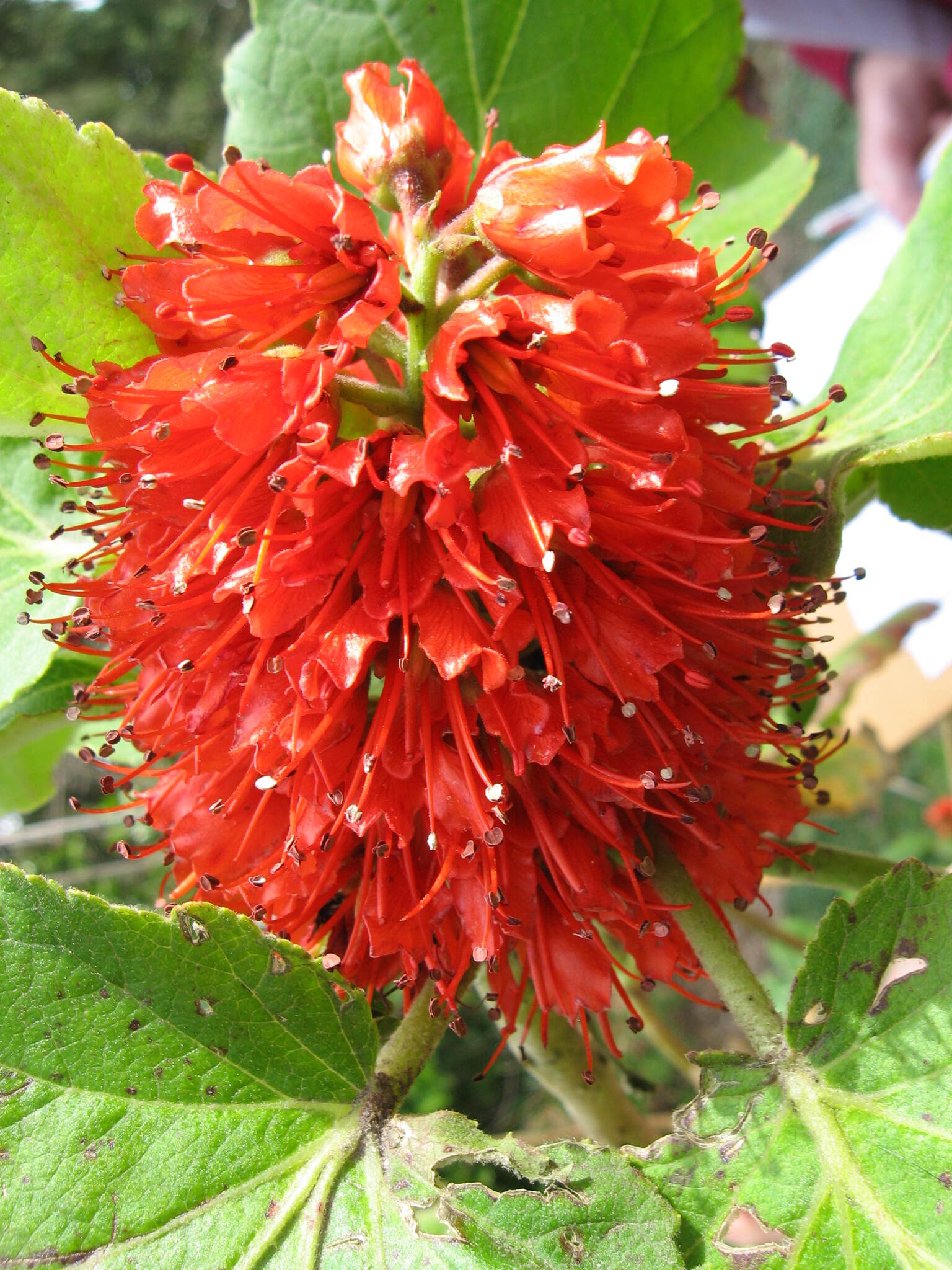
Commemorating Sir George Grey, Governor of the Cape Colony from 1853–61.
Deciduous trees or large shrubs. bark grey-brown. Branchlets thick and soft. Leaf stalks 1–9 cm long, hairy, dilated at the base and clasping the stem. Leaves simple, alternate, clustered towards the ends of the branchlets, almost round, margins with toothed lobes, surface hairy or glabrous; stiuples absent. Flowers produced with the new growth, bisexual, regular, red, showy, in dense terminal clusters. Sepals 5, persistent. Petals 5, red, notched at the tip. Nectary disc well-developed, fleshy, cup-shaped, 8–10-lobed, the lobes alternating with the filaments, and usually with a gland at the tip. Stamens 10, in 2 rows of 5, opposite and alternate with the petals, inserted between the disc and the ovary. Ovary superior, deeply 5-lobed, of 5 carpels with inner edges fused; ovules numerous. Fruit a 5-lobed capsule. Seeds small, numerous.
Previously placed in its own family Greyiaceae, of which it was the sole member, but now included in Francoaceae. This treatment follows Stevens, P.F. (2018, Angiosperm Phylogeny Website).
Seeds and cuttings.
1 genus of 3 species from South Africa.
In the wild, occasional intermediates have been recorded between G. radlkoferi and G. sutherlandii, casting some doubt on their distinctness.
Killick (1977).
Source: (2002). Greyia. In: . Horticultural Flora of South-eastern Australia. Volume 3. Flowering plants. Dicotyledons. Part 2. The identification of garden and cultivated plants. University of New South Wales Press.
Updated by: Val Stajsic, April 2018
